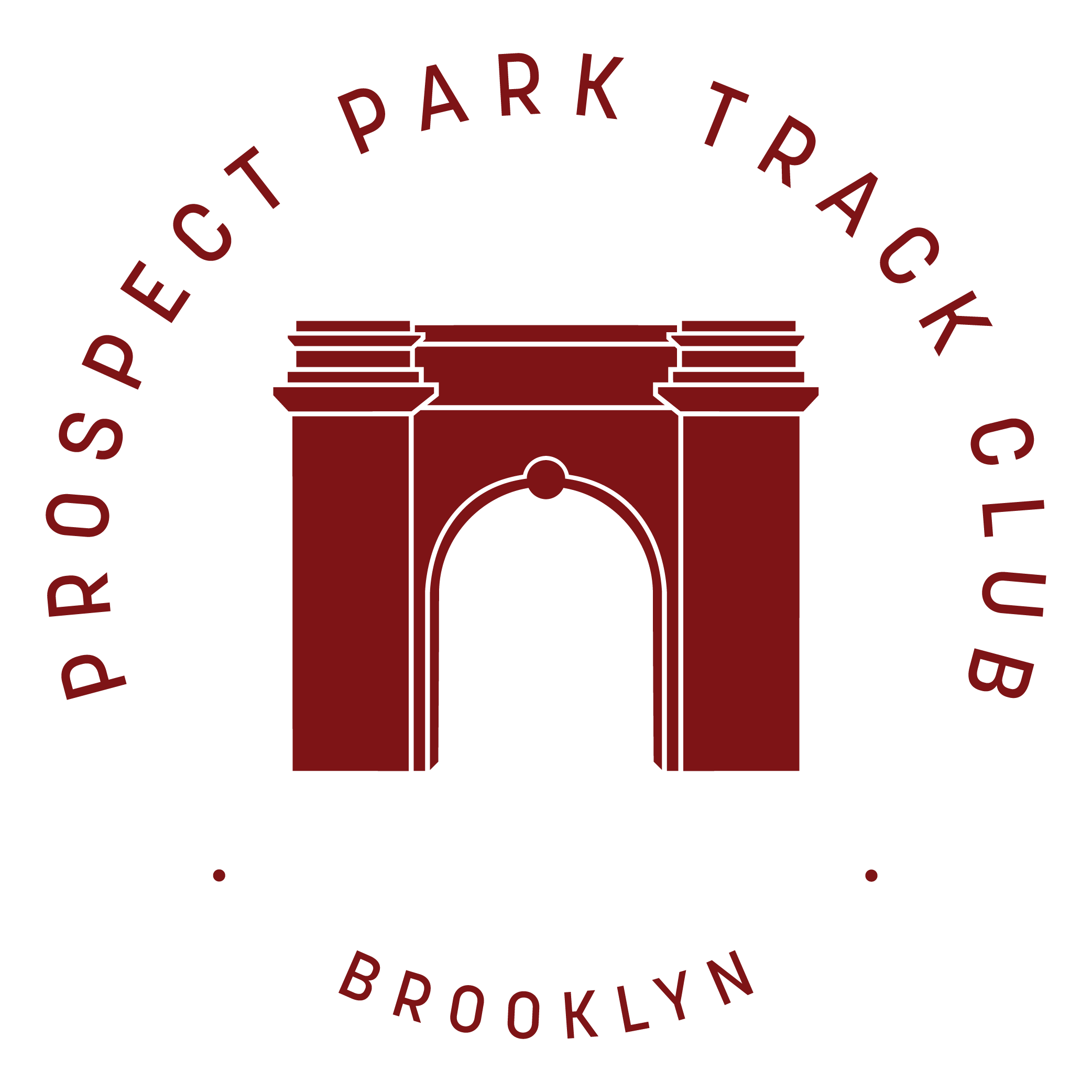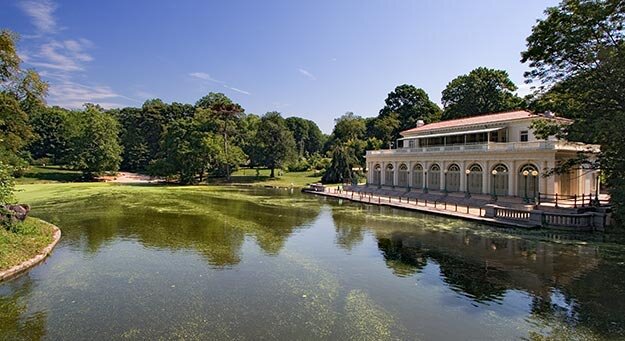PPTC Celebrates Earth Day: A Look at Prospect Park’s Audubon Center
Did you know that the first Earth Day was observed on April 22, 1970 – the same year PPTC was founded? This year’s theme is climate action, so in honor of such a banner year for our planet (and our club!), the blog team was excited to publish a week’s worth of posts highlighting the nature-related activities and services Prospect Park offers, as well as ways you can be a more environmentally friendly runner. Then COVID-19 hit, and we switched gears as businesses and services got locked down.
Thankfully, the Prospect Park Alliance was fantastic about working with us for this interview, and was able to provide some tips on how we can continue to enjoy the park, even as we practice social distancing.
A special thank you to Ryan Glantz, Manager of Public Programs at Prospect Park’s Audubon Center, for taking the time to answer a few questions about the Audubon Center, his job, and for providing a few tips for those interested in learning more about the art of bird-watching.
About The Audubon Center
PPTC: Can you tell us a bit about Prospect Park’s Audubon Center in the context of the park’s history, as well as what its function is today?
Ryan Glantz: The Audubon Center in Prospect Park has an interesting story within the jurisdiction of Audubon New York. Most Audubon Centers in the city are run by the Audubon Society, but the one in Prospect Park is run through the Prospect Park Alliance, in partnership with National Audubon Society. We were the first Audubon Center ever to open inside a city. Most centers are out in the wilderness, generally with their own nature sanctuaries or forested areas that they use as teaching tools to manage. Prospect Park’s Audubon Center was the first center without management land of its own. Because of that, it is one of the most easily accessible centers.
The Audubon Center in Prospect Park is currently located in the boathouse, which is a historic building in the park. After the structure was damaged due to years of use and neglect, it was shuttered for many years. It wasn’t until recently that it received a major renovation and became the home of the Audubon Center. The center’s mission is primarily to promote environmental education and conservation practices within Prospect Park. It aims to help people get involved and learn about stewardship in the park with a focus on birds and environmental stewardship.
Fun Fact: John James Audubon was the founder of ornithology - the study of birds - for whom the organization was named. “Audubon became a pioneer in portraying birds and other wildlife in natural settings. During his time at Mill Grove, he built a substantial base of interest in ornithological art, and his experimentation resulted in the rapid development of his skills as an artist.
The Boathouse in Prospect Park, where the Audubon Center is located
The center provides a large variety of educational and recreational programs. Through the main building, they are able to run tours for bird watching, develop science based programs, and design activities for families and children. These programs are run with the goal of helping people get involved with the science of the park in a hands-on, experiential way. They model live animal feedings and teach participants how to build bird feeders, which they can take home for use in their own yard after class. There are also popular pop-up programs that are offered during the summer months (however, these programs have been altered during the time of COVID-19).
Tips for Bird Watching in Prospect Park
The Audubon Center is currently closed due the pandemic, but the spring migration season is still approaching. Here are some tips for beginners:
Watch for warblers. There are going to be a lot of very colorful birds flying around! One of the favorites is a group called warblers. They are tiny little birds (2-3 inches long), and most of them have bright yellow splashes on their feathers, making them easy to spot. It’s really fun to try to find these brightly coloured little birds all over the park.
“If you’re going to be out and about in the park, you may want to bring a pair of binoculars so if you see something moving suddenly, you can get a better look at it. For beginners, an 8X magnification and lens size between 32-42 is good; larger binoculars provide more magnification and a sharper, closer image, but are more difficult to use. Note: At the current time, it is advised not to share your binoculars with anyone else. ”
To see more birds, head outdoors during spring and fall. The best time for bird watching is during spring and fall migration seasons, which is right now! There will be birds present in the summer months, however the tree foliage can make it difficult to spot them.
Go early (or late afternoon). Early mornings and late afternoons are the best times to go birding because that’s when the bugs are out. All the birds who like to munch on those little bugs and mites are more active during those times of day.
Birds prefer cool weather. The ideal time for bird watching is in the early morning and late afternoon: Birds (like us!) like to be cool. They will be more subdued during the hotter hours of the day: You will still see them, but they’re not as active. They are most active during the morning and early afternoon when bugs — a favorite food of many birds — are most plentiful.
“No matter what season you plan to bird watch, it helps to develop an ear for bird calls: You’ll be able to hear more birds than the ones you can see.”
Download a bird watching app (or bring a book or knowledgable friend). To identify bird songs, enlist the help of an app. Merlin Bird ID by Cornell Lab is highly rated, and is free on iOS. There is also an official Audubon Bird Guide App made by the Audubon Society that has some good information as well. While it’s nice to look at birds in the park, there are many species that can be confused with each other, so an app, guide or knowledgable friend can be helpful.
Keep your ears open (and eyes up). This is one of the best tips to keep in mind: If you’re focusing on the ground or just the trail, you could easily miss birds flying just over your head.
Other Helpful Tips:
Carry in, carry out. Everything you bring into the park with you, bring out again. Don’t litter. And if you see someone littering, ask them not to.
Don’t feed the birds. Our wildlife is wild and we want to keep it that way. While the feeders in the park are permanent fixtures that are filled by the employees, they are usually left empty in the summer when food is plentiful. But just because you see an empty bird feeder doesn’t mean you should do so yourself: When people feed the birds – even if it’s well intentioned – it breaks their natural eating habits. Foods like bread aren’t good for birds, and can cause them to get sick. Also, feeding birds things that shouldn’t be eaten can bring about unwanted change in the park ecosystem. In the winter (when food is scarce for the birds), the center will put on special bird feeder making workshops for folks to participate in. They usually take these home, or place them in smaller parks near their home.
How You Can Get More Involved:
Everything the Audubon Center does is free of charge: You can always visit the center when it’s open. Visitors can drop by anytime, and there is no entry fee or membership commitment. Check out the Prospect Park Alliance website. If you’re interested in learning more about birding, you can also join the Brooklyn Bird Club. Though they’re postponed for now, they offer weekly walks.
Ryan Glantz, Manager of Public Programs at Prospect Park’s Audubon Center
You can also support the Prospect Park Alliance by becoming an Alliance member. This doesn't just go towards helping the Audubon Center, but to everything the Alliance does, including parks maintenance and programming. The Alliance will be posting articles in the near future about how to stay involved while maintaining social distance.
Bird watching is fun, relaxing, and you don’t have to be an expert with an expensive camera, own binoculars, or have years of experience doing it. Bird watching is for everyone!
Editor’s note: More info on bird watching in Prospect Park can be found via the Prospect Park Alliance. They’re currently working on providing online programming for residents unable to visit the park during the COVID-19 pandemic. We’ll update this post when we have more info.
Text by: Leanne Glasser
Edited and Produced by: Alison Kotch
Photos courtesy of: Prospect Park Alliance


